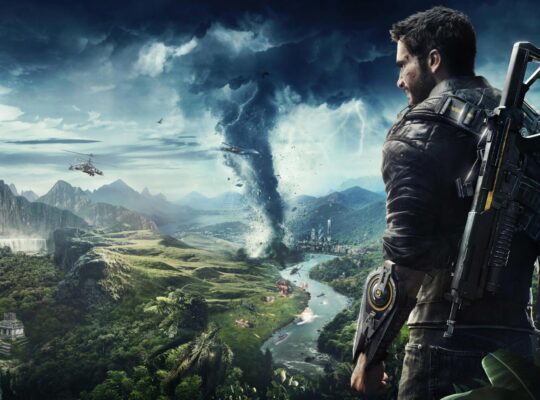The Sakya Sect, one of the four primary schools of Tibetan Buddhism, has its headquarters at the Sakya Monastery. Those traveling from Shigatse to Lhatse will pass this monastery. Which is located at an altitude of about 4,300 meters and is well worth a visit because of its proximity to Everest Base Camp.
Presentation of Sakya Temple
The Sakya Monastery is about thirty kilometers south of the G318 Friendship Highway connecting Shigatse and Lhasa, in Sakya County of Shigatse Prefecture, around one hundred and thirty kilometers west of Shigatse, the second biggest city in Tibet after Lhasa.
This beautiful Buddhist temple was built in the eleventh century AD. Its walls are made of red brick and have yellow trim and golden roof spires on top. Very few conventional pagoda-style roofs can be seen at the monastery, which instead has a blend of Nepali and Tibetan styles.
The Indian sage Atisha is supposed to have meditated at one of the locations where the monastery now stands. He is said to have had visions of where the Buddhas Avalokiteshvara, Mahakala, Manjushri, and Vajrapani would be born. The major northern monastery was built by the Nyingmapa lama, Khon Khonchong Gyalpo, some decades after establishing a miniature shrine. The southern monastery on the other side of the Zhongqu River was built in the late 1300s. Since then, it has grown and been fixed up in many ways.
Choygal Phakpa, who started the Sakya School of Tibetan Buddhism, paid for the southern monastery to be built and asked that the walls be painted red, white, and gray to honor the Buddhist Tulkas. This school is significant in Tibetan history because the Mongol Warlord Kublai Khan requested that the Sakya Pandita teach Buddhism at his court.
What makes a trip to Sakya Monastery so worthwhile
When it comes to traditional Tibetan education, few places can compare to the illustrious history and prestige of Sakya Monastery, the main seat of the Sakya School. If you’re planning a trip to Tibet, you should stop by this remarkable monastery.
Sakya Monastery has priceless artifacts.
Locals refer to this incredible monastery as the “Second Dunhuang,” in honor of northern China’s world-famous Dunhuang Mogao caves. The library inside has more than 40,000 volumes of Buddhist literature. Hundreds of volumes of Buddhist scriptures, including some of the first translations from Sanskrit to Tibetan, are stored in the monastery’s cloister. More than ten thousand scrolls and scriptures may be stored on a shelf 57 meters in length and eleven meters in height.
The world’s most enormous Bible may be found at this library. The Burde Gyaimalung is a six-foot-long, four-foot-wide, and two-foot-thick book. This almost 500-kilogram tome is a priceless chronicle of Tibetan history, philosophy, religion, and literature.
The four holy pillars, considered an essential Buddhist architectural feature, are housed in the monastery’s main assembly hall and among its many treasures. The pillars, known all across the plateau, are made from whole tree trunks and have elaborate carvings. According to legend, Kublai Khan donated one of the pillars to the Sakya monastery. The Mongol warlord also gave a white conch shell from India, which was put in a mandala box to be the hall’s center.
Tall sculptures of Buddha flank the walls of the monastery’s main hall; several statues are distinctive in that they serve as shrines for the monastery’s past abbots. One is claimed to contain Padmasambhava’s golden feces, while another is said to have the tooth of the primordial Buddha, Sangye Wosum.
Hosts spectacular religious rituals.
The impressive monastery is most beautiful and lively during the many religious celebrations hosted on the grounds and in the courtyard throughout the year. One of Buddhists’ most anticipated events of the year is the 10-day-long Cham Dance Festival at Sakya Monastery in the middle of July. Sakya’s lamas and monks put on elaborate masks to tell the tales of Buddhist saints via dancing during the festival.
Easily accessible for a trip to the nearby Sakya Monastery
Going to the Sakya Monastery is far more practical than you may think. Sakya Monastery is a must-see if you’re traveling west through Tibet and is located about 30 kilometers off the major Friendship Highway between Shigatse and Tingri.
You can include a visit to the monastery in your regular plateau excursions, and if you want to stay the night, Sakya County has comfortable lodging and tasty meals. Although it is off the main path through Tibet, the village developed around the monastery over the centuries offers some fantastic places to stay. There are only a few hotel options, but the ones here are high quality. The sleek Sakya Manasarovar Hotel and the cozy Sakya Lowa Hotel are in town.
Conclusion
This one-of-a-kind monastery is well worth a detour off the usual path to see its beauty and richness as one of the oldest monasteries in Tibet and the founding monastery and seat of the Sakya tradition of Tibetan Buddhism. As such, if you find yourself on the other side of the plateau, consider detouring a little to explore the monastery and everything it has to offer.
Also Check :- More Information





